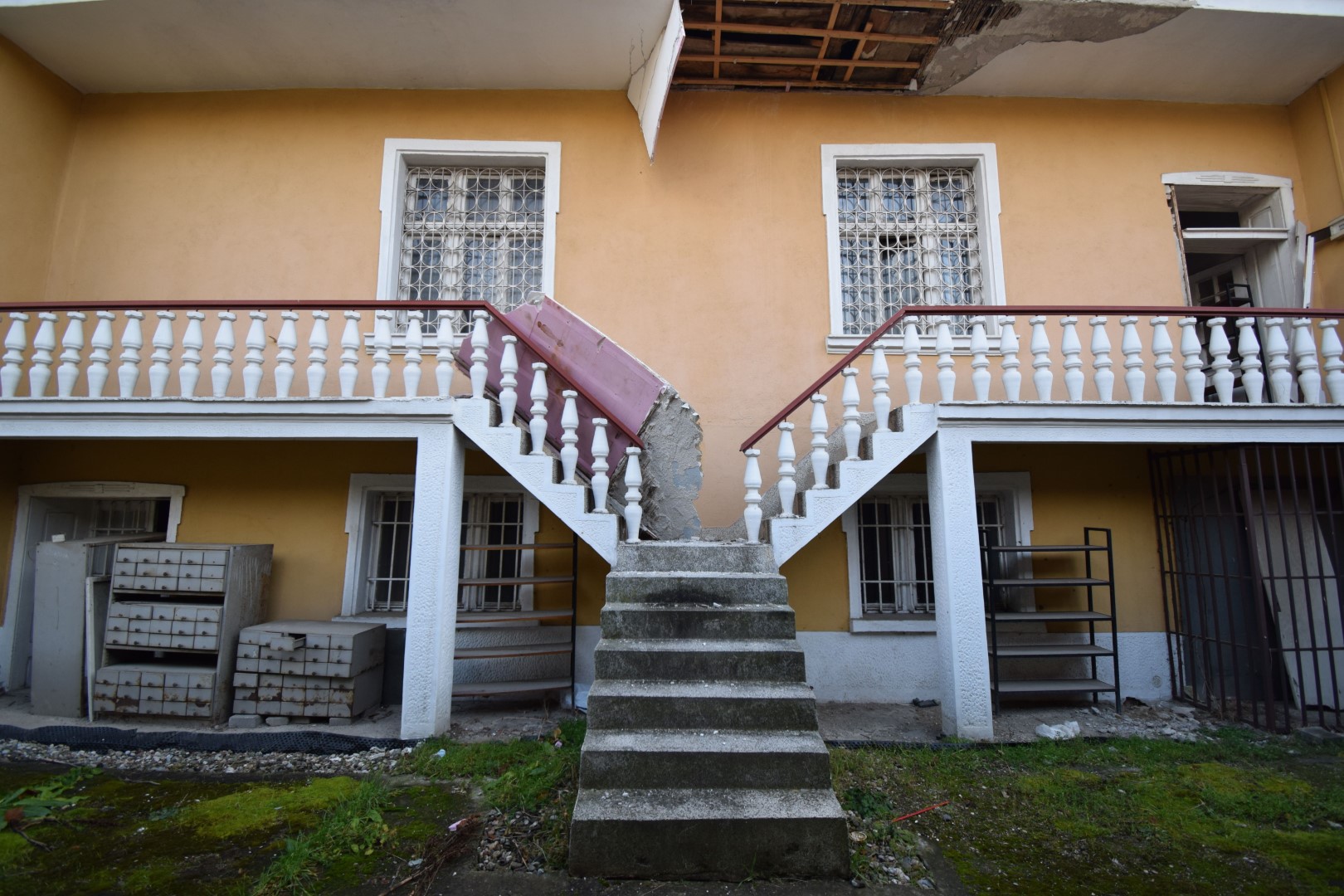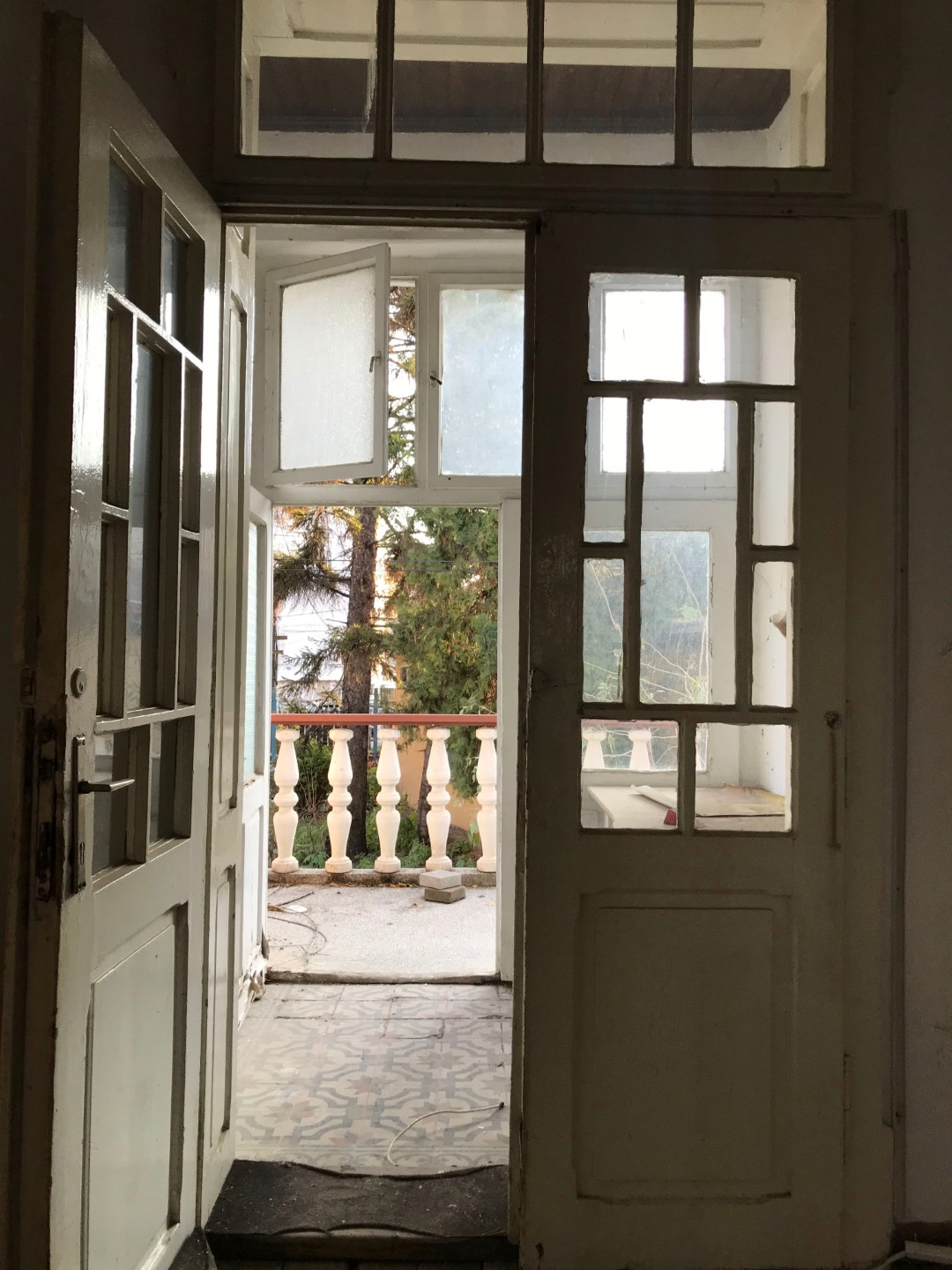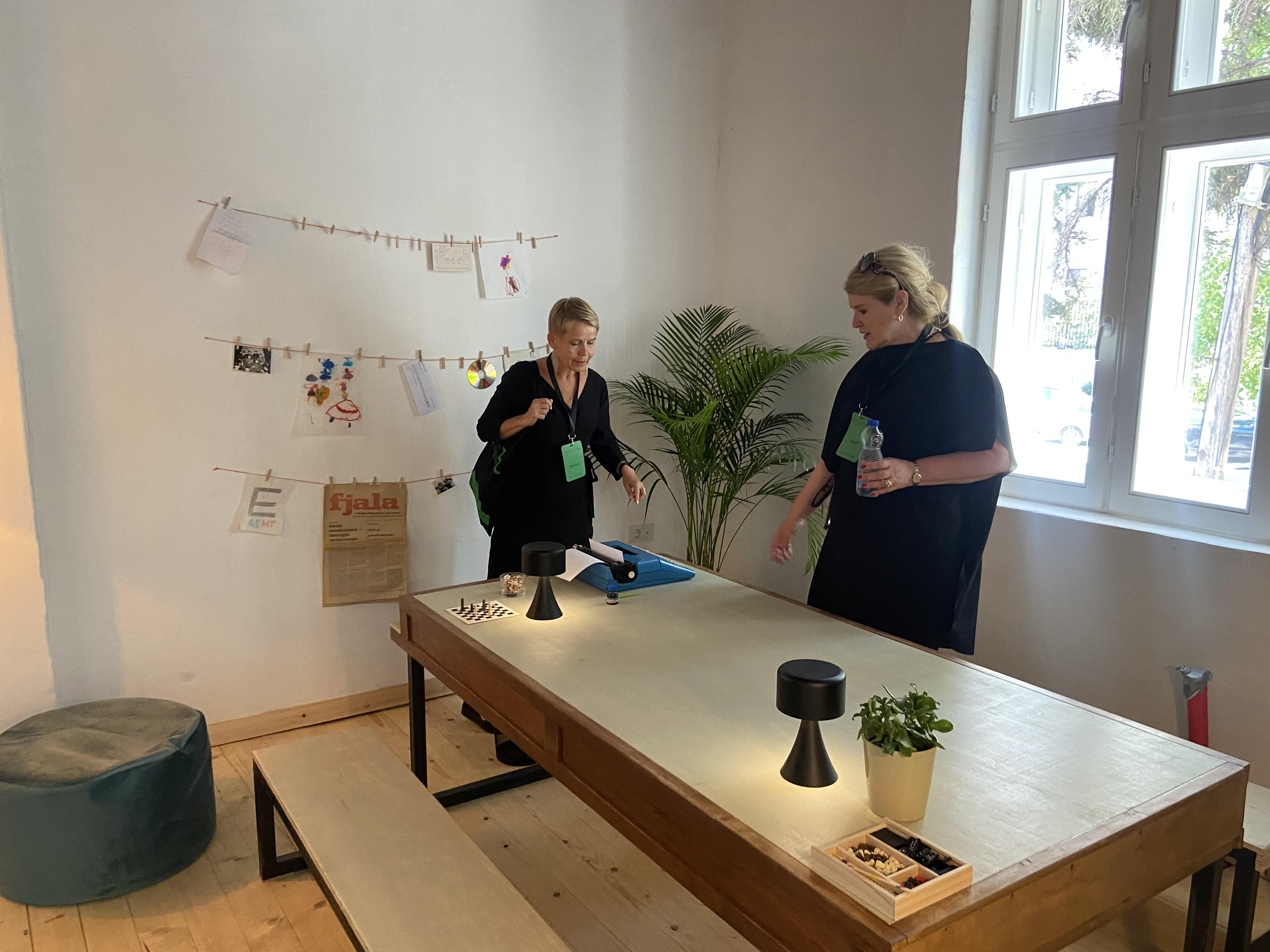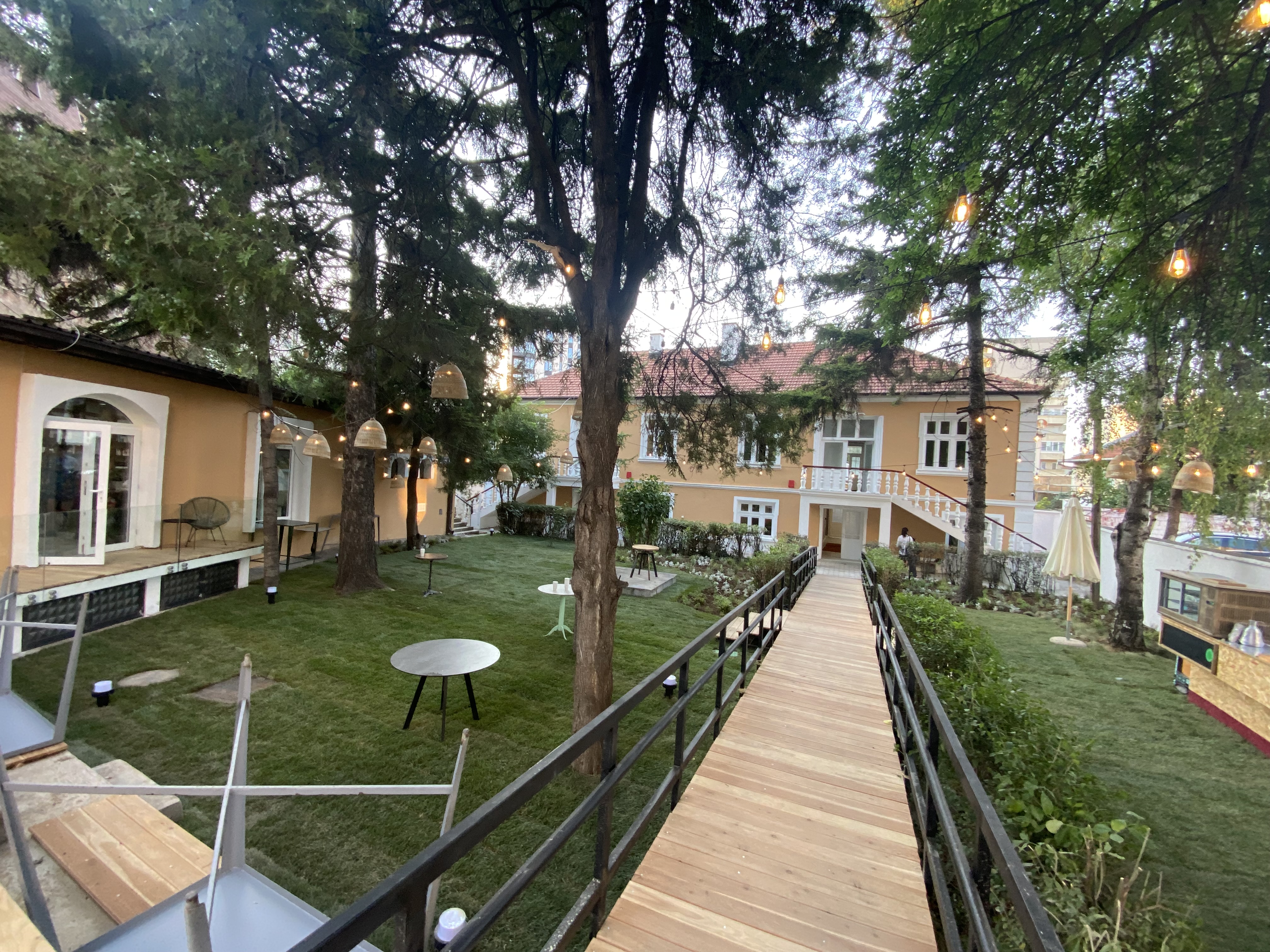A fresh look at urban narratives and potential futures of Pristina
July 26, 2022
Manifesta – the European Nomadic Biennal - has come to Pristina for its 14th edition, and it is not as unexpected a choice as one may think. Established in the early 1990’s, the event has evolved into a traveling platform focusing on the dialogue between art and society, investigating and instigating positive social change. It has consistently chosen host locations that reflect Europe’s ever-changing DNA, and Pristina, having rapidly grown from a small town into a buzzing city home to about 200,000 people and thousands of daily commuters, is a city of great potential and bright future.
With more than half of Kosovo’s population 25 years old or under, Pristina is emerging as a hub of creativity and innovation, manifested by a vibrant creative scene. The Kosovo New Wave has emerged in the film industry with a generation of filmmakers awarded at international festivals such as Sundance, Bafta, Toronto, Cannes, and shortlisted for Oscars. There are inventive visual arts, unique fashion design featured in Vogue, and trailblazing art and film festivals - one hosted every summer by Dua Lipa, in her annual homecoming to Kosovo. On the other hand, with construction sites mushrooming across the city and its outskirts, and the number of cars multiplying, the city is a theater for complex urban challenges being felt through traffic jams, polluted air, shrinking green spaces, and high youth unemployment.
It is no coincidence, therefore, that UNDP Kosovo joined forces with Manifesta. We were thrilled to partner in transforming the former Hivzi Sulejmani Library - an abandoned public library and a protected cultural heritage site - into the Center for Narrative Practice. This quiet hidden gem, forgotten behind the busy streets, has been turned into an urban oasis and creative hub where people from all walks of life can learn together, tell stories and create their own narratives.
The Center will serve as an interdisciplinary space and enable both community and visitors to conduct research and to use tools and materials available to tell stories. “In a way the Center encapsulates what our whole team would like to see Manifesta 14 contribute to the cultural landscape: It returns a lost building to the residents in a manner that responds to the desires they have expressed. It’s a place to read and to listen to stories, to learn new ways of telling stories, and to reflect on how we use storytelling to engage with one another, to take part in public and political life and to bring forth new imaginaries and ways of being. Whether you’re five or seventy-five, you can do all kinds of things there from self-publishing to podcasting, from reading and research to conservation, archiving and urban gardening”, says Catherine Nichols, Creative Mediator of Manifesta 14.
As one of the main physical legacies of Manifesta 14 Prishtina, the Center represents a model that could be replicated throughout Kosovo, providing a space for creative industries, where communities can connect and explore solutions to urban challenges, creating narratives that can lead to a more sustainable future.
Beyond that – we recognize the important role that Manifesta can play in accelerating inclusive urban transformation. During its 100 days of engaging people and bringing communities together, Manifesta provides a unique opportunity for Pristina to demonstrate its potential and willingness to reclaim public space and re-imagine the future its residents aspire to achieve.
Through 25 fascinating sites, mediated tours, education programmes, and other activities, the fate of Pristina’s important but forgotten landmarks – such as Kino Rinia, the Brick Factory, and the Grand Hotel – is quested. These prominent buildings, used as culture, leisure and exchange spaces, can help better understand the city’s past and reflect on its possible futures. By utilizing tools of inclusive innovation and storytelling, Manifesta’s urban research also aims to meaningfully connect different parts of the city together in a sustainable, green, and safe manner. Through simple and symbolic interventions and venues, the event demonstrates how small actions can contribute to meaningful change and multiple benefits.
UNDP sees arts and creative industries as a potential for Kosovo to build bridges across social boundaries and divisions, to inspire new changemakers and to cut through disciplines for urban transformation. Art allows for new narratives and perspectives, bringing people together across communities to experience its transformational power and elevating well-being. At the same time, creative industries make up an increasing share of the global economy, creating millions of jobs in cinematography, industrial design, cultural tourism, sustainable production, and other areas.
As part of our commitment to supporting Kosovo’s creatives in the creation of new decent jobs and promoting social cohesion, UNDP partnered with the Municipality of Pristina, the Government of the Grand Duchy of Luxembourg, the Royal Embassy of the Netherlands to Kosovo and Manifesta in creating the Center for Narrative Practice. The fact that we were able to jointly set up the Center in such a short period of time – in just a few months – demonstrates the power of partnerships when working towards a common dream.
Blog by Maria Suokko, UNDP Resident Representative
Our thanks to Manifesta 14 Prishtina and the PR Office of the Mayor of Pristina for sharing with us some of the photos used in this blog.

The main building before the renovation. An architectural heritage gem with a crushed roof and broken stairs, causing safety hazards and making the building unusable.

A visitor to the abandoned library was greeted with broken window frames and glasses. Until 2016, this site played an important role in the social and intellectual development of Pristina's residents.
Inside the main building. The original functionality of the site was maintained in some parts of the buildings, which will continue to function as a public library.
Along with safety and efficiency, adaptation principles were also incorporated: transforming existing spaces into a community center with spaces suitable for different types of gatherings.
A shaded area was created at the back of the main building to accommodate open workspace for creative arts.
A look inside the Oaza, which will house the Education and Community Programme for Manifesta 14's Schools Programme. In the photo: Hedwig Fijen (Manifesta's Founding Director), Maria Suokko (UNDP Resident Representative), Hajrulla Ceku (Minister of Culture, Youth and Sports), Franz Fayot (Luxembourg’s Minister for Development Cooperation & Humanitarian Affairs), Perparim Rama (Mayor of Pristina), Catherine Nichols (Creative Mediator).
View of the main building stairs. Since the main building's windows were severely damaged, they were replaced. Other original elements were left intact, such as façade decorations and stair railing.
10. Working together since day one. An exciting and fast journey that led to such a meaningful cultural and creative hub in Prishtina.
A perfect venue for get-togethers. By preserving as much of the existing buildings and spaces as possible, the restoration project ensured a safe and efficient operation by making only necessary structural and functional improvements.

Hedwig Fijen (Manifesta’s Founding Director) and Maria Suokko (UNDP Resident Representative) visiting the newly restored Centre for Narrative Practice.

As part of the redesign of the garden, an open green space was integrated as part of the surrounding area and existing buildings, acting as a connector between outside and inside. All garden elements, such as steps, ramps, were made as natural and efficient as possible.

 Locations
Locations